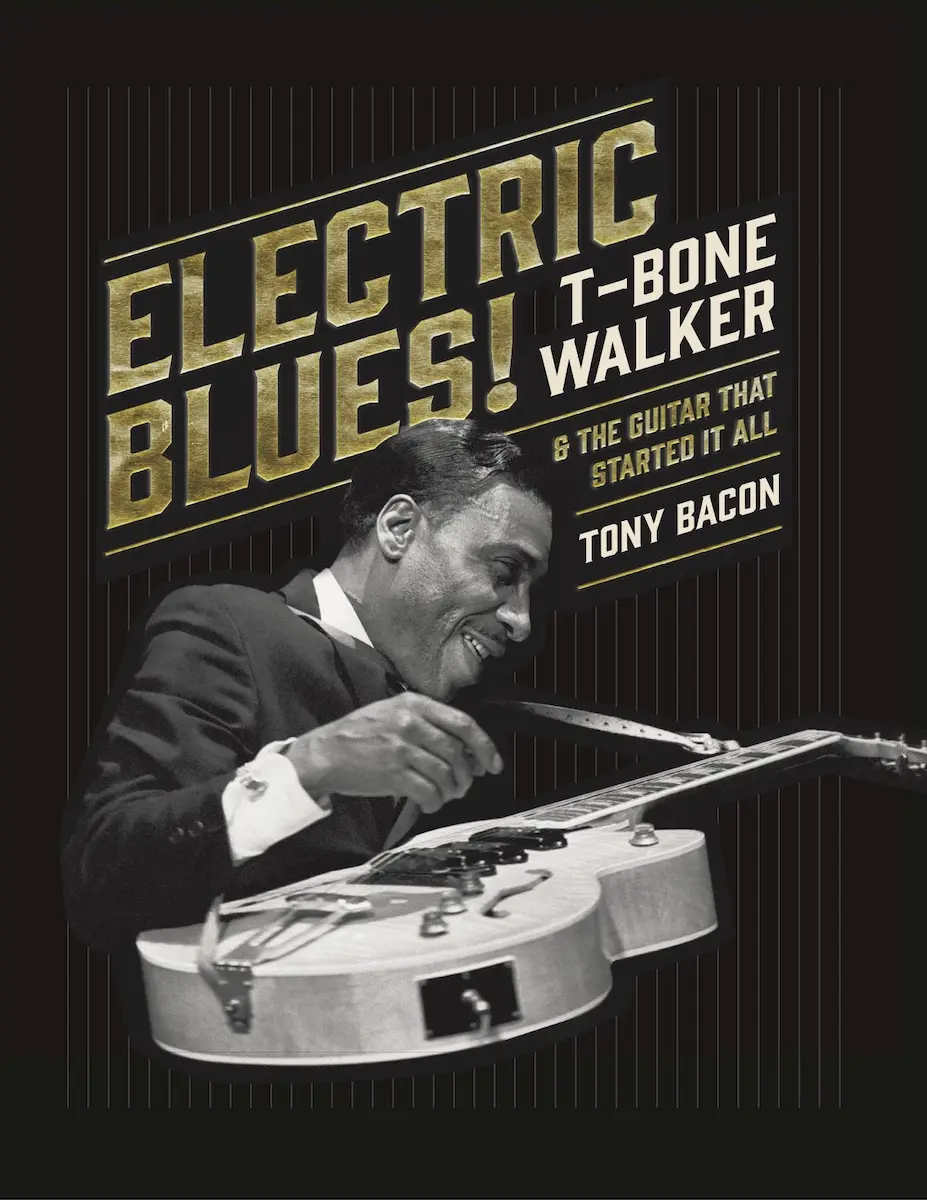
What’s not to like about T-Bone Walker? His suave lines act as balm for the soul, his roasted-chestnut voice makes your heart melt. He invented a hybrid blues style that linked street corner to class joint, founded on an inimitable time-feel and all sorts of clever accents and saucy bendings of strings. His booming, sharp-as-a-knife chords clashed with the sounds of slick, high-level jump and jazz bands.
As writer Tony Bacon puts it in Electric Blues, one might when listening to compilations of Walker’s music incorrectly conclude that his work is as uniform as the marching of North Korean soldiers. Unquestionably, Walker often repeated himself – as was the bluesmen’s wont – once he’d found his otherwise individual format. However, Bacon succinctly argues, view him in the light of his glory years and one should realise that his singles – a slow blues here, a jump tune there – dropped like bombs, hitting bull’s eyes on the jukebox market with the regularity of a clock.
It’s the heyday of pioneering Walker hits like Call It Stormy Monday and Glamour Girl in the late 1940s and early 1950s on the Black & White and Imperial labels that’s brought to life zestfully and insightfully by Bacon. He also paints an informative picture of Walker’s personal life and development from teenage vaudeville act in the Deep South to acrobatic showman and blues hero, quoting generously from Helen Oakley Dance’s comprehensive standard work from 1987, Stormy Monday.
Ownership of the works of Dance and Bacon – the latter an author and journalist for various guitar and gear magazines who wrote a book about Paul McCartney’s famous Hofner bass – should suffice to complete your understanding of T-Bone Walker. It’s useful to be reminded of the importance of Walker: he’s a figure from the distant past who is all-too-often forgotten by a general audience brought up on the one-sided vision that electric blues is derived from the raw Chicago style of Muddy Waters and the likes. Styles and techniques have evolved – from Stevie Ray Vaughan to Robben Ford to Scott Henderson – but there is no denying that T-Bone Walker, born in Linden, Texas in 1910, is the source. He was a tasteful, jazz-inflected player who was first in showcasing the possibilities of the electric guitar in blues – in parallel to the huge innovations of his childhood friend Charlie Christian in jazz – and still instructive for whoever starts out as blues guitar slinger today.
Bacon’s argument includes a theme that’s most welcome to aficionados, namely the question of who pioneered the use of the electric guitar in the late 1930s. He reaches beyond the usual suspects like Eddie Durham and Lonnie Johnson, coming up with information about players as diverse as Hawaiian guitarist Alvino Rey and country stylist Leon McAuliffe. It’s a compact slice of context that effectively limelights the innovative brilliance of T-Bone. To our satisfaction, Bacon also goes into Walker’s overseas adventures in the UK and on the continent with the American Folk Blues Festival and Norman Granz’s Jazz At The Philharmonic tours in the 1960s. It was a period that, whilst generally marked by unremarkable recording activity, sealed his reputation as a charming veteran of electric blues guitar, and that, not least, influenced myriad young lions of the British and continental blues boom.
By the late 1960s, Walker had long since been surpassed in profile by his former disciple B.B. King, who’d repeatedly tell his happy-ending saga about his dearly beloved Gibson guitar Lucille, rescued from a fire in a club in the 1950s. However, as far as entertainment value is concerned Walker’s own adventures with his Gibson guitar eclipse King’s anecdote – even if the bulk of them have been recounted posthumously (Walker passed away in 1975).
Those tales involve the beautiful figured-maple, flamed Gibson SE-5N that Walker acquired in 1950. It endured gunshot wounds at a frightening calamity in a rowdy North Carolinian spot and mysteriously disappeared in France in 1968. Was it theft? A payment for gambling debts? Scandinavian hippie chicks? No one will ever know for sure why it vanished. Ultimately though, the guitar turned up in 2016 and in 2023 was purchased by tech wizard and entrepreneur Patrick Racz. On 25 September last, the very guitar was used in a hot set by guitarist Denny Ilett and band at the rejuvenated Regent Sounds guitar shop in London’s famed Denmark Street to launch Bacon’s book. Those present could hear the illustrious vintage tone of a guitar that was integral to the history of the blues.
To an extent it might sit in a niche for guitar geeks, but Electric Blues – a lavishly illustrated, hardback labour of love with a classy case and a 1000-copy print run – is also tempting for anyone interested in the history of 20th century popular music and culture.
Electric Blues! T-Bone Walker & The Guitar That Started It All, by Tony Bacon. Regent Sounds (2025), 164pp with photographs and memorabilia. ISBN 978-1-0369-2553-6










